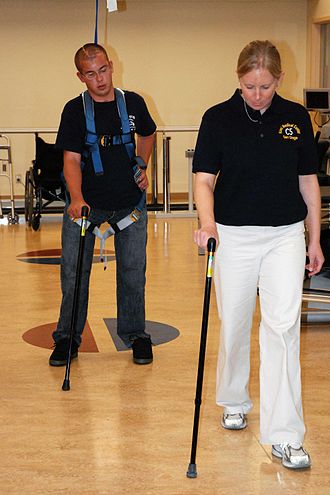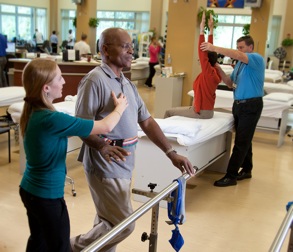



Home > Blog > Physiotherapy > Gait Dysfunctions Physiotherapy

A man uses a hands-free harness walking gait training device during a physiotherapy gait session
Gait dysfunctions are changes in your normal walking pattern, which is typically caused/related to a disease or abnormality in different areas of the body.
Gait dysfunctions are among the most common causes of falls in older adults, estimated as the cause for approximately 17% of falls. What our senior physiotherapists do are identifying the root causes of gait dysfunctions, and designing specific physiotherapy gait treatments that restore gait.
Gait dysfunctions make the pattern of how you walk (ie, your gait) appear “abnormal."
Most changes in gait are specificly-related to medical conditions. Gait dysfunctions can be related to
In many cases, treating the medical condition directly will also directly help normalize the gait pattern.
Common classifications of gait dysfunction include:
Note: These are only a few of the many possible gait dysfunctions. If you suspect you are walking unusually or differently, contact our senior physiotherapist for a gait assessment.
There are many different strategies and tools that can help our senior physiotherapists diagnose a gait dysfunction - we will ask you questions, such as:
We will also conduct certain tests to learn more about your condition. Your assessment may include:

Physiotherapists play a vital role in helping individuals improve their gait.
Our senior physiotherapists will work with you to develop a treatment plan to help address your specific needs and goals. We will design an individualized program to treat your specific condition.
Physiotherapy treatment strategy may include:
Pre-Gait Training
We may begin your treatment by having you perform activities and exercises that will help you understand how to improve your gait, without taking a single step.
These exercises may include simple activities, such as having you stand and lift your leg in place, to more complex strategies like stepping in place and initiating contact with your heel to the ground, prior to other portions of the foot.
Gait Training
We will help you focus on retraining the way you walk. Because the underlying condition may be vestibular, neurological, or muscular, variations in the training exist. We will design the safest and best training for your specific condition.
Balance and Coordination Training
We may prescribe balance training physiotherapy exercises and activities for you to perform to help stabilize your walking pattern.
Neuromuscular Reeducation
We may employ neuromuscular reeducation techniques to activate any inactive muscle groups that may be affecting your gait.
Bracing or Splinting
If the gait dysfunction is due to significant weakness or paralysis of a ligament, we may teach you how to use adaptive equipment, like a brace or splint, to help you move.